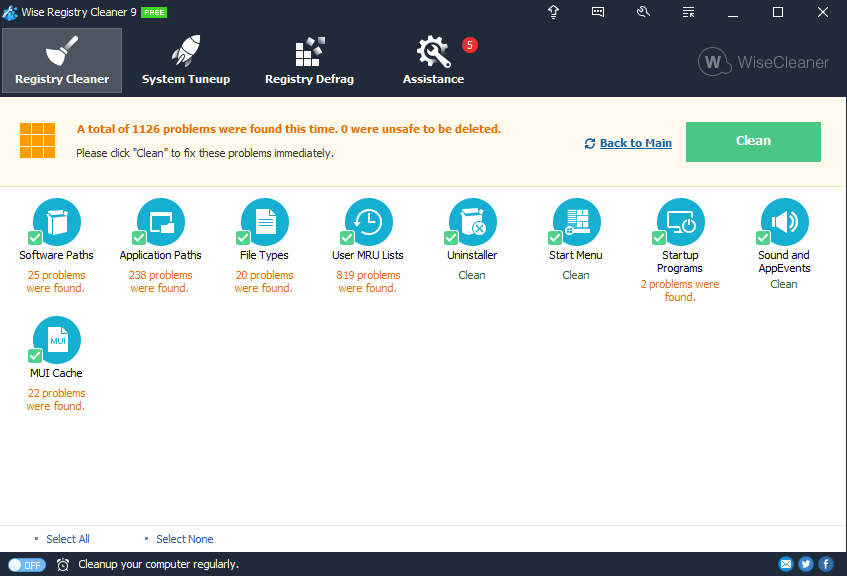If you’ve ever owned a computer, you probably know about the common mistakes that slow your computer down. It’s a fact of life that computers will eventually become slow and clunky. There is simply no escaping it. However, there are a few things you can do to speed up your computer in the long run and it all begins with the registry.
The registry is the core part of your computer. This is where programs store information and settings for them. In fact, it is the main reason why your computer runs slow at times. It doesn’t matter if you have a laptop or a desktop; the registry is the root of your system’s problem.
So how do you make sure your registry is error free? The trick is to clean out your registry once a month. This way, you will be optimizing its functions so that it performs faster on its own. Don’t expect miracles though. It may take you up to 2 weeks just to notice a significant speed difference in your computer’s performance.
What’s worse is that the registry is often accessed without even being aware of it. Every time you add or remove a program from your computer, your registry is affected. This happens every time you browse the internet, download or install a program. But did you know that this problem is even worsened by the speed of your computer? It gets more frustrating as time passes by.
The problem is that even the best registry cleaner or anti-virus software has a hard time removing invalid entries. This is one of the most common problems because these invalid entries can cause errors inside your registry. Since it’s an important and sensitive area, not many people know that they should fix this problem themselves. The result is a corrupted registry, which leads to computer crashes and even hardware failure.
In order to solve this problem, you first need to do a thorough cleaning of your registry. You should perform a search for registry cleaners and anti-virus programs which are capable of cleaning up the registry safely. After you’ve found the software that fits your needs, download it and install it on your PC. Make sure that you follow the on-screen instructions, because some registry cleaners have been known to cause more damage than they cure.
Before starting the scan, close all the applications and windows that are currently running. Make sure that you also close all the running services like internet and email. Also, make sure that your computer’s power is fully shut down before starting the registry cleaner. When everything is ready, launch the program and scan your registry for errors. A list of all errors will be generated and the software will try to fix them one by one.
Some programs will report that a scanning has failed. This doesn’t mean that you have to be worried. All the errors will be detected. There might even be a combination of errors, but all of them can be fixed easily. Fixing registry errors can save your hard-earned money, so don’t neglect this task.
One mistake that most registry repair tools make is to delete files that are still needed by the system. If you don’t know which files are important, get help from your software’s support team. They can tell you which files should be deleted or moved, so that no important files are left in your registry that might be causing damage.
Another common mistake is removing files that are not really necessary. Sometimes, you remove one file, only to see a multitude of other unnecessary files appear. This is because the program removes the files that are not really required. When removing a program, always make sure to create an exit path or folder where you will remove the program completely. Do not ignore this step because even one wrong deletion can cause serious problems to your system.
In addition, you might be able to fix your computer error by simply backing up your registry before beginning the process. There are times when your computer might encounter a fatal error or problem, and you have to be very careful with your choices in backing up your registry. Make sure that you understand the instructions thoroughly before beginning. You might even find that one of the most common mistakes will save your day!




